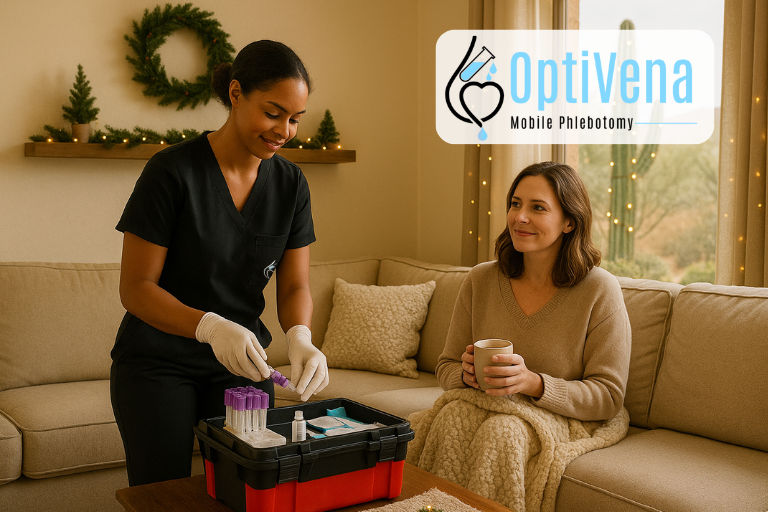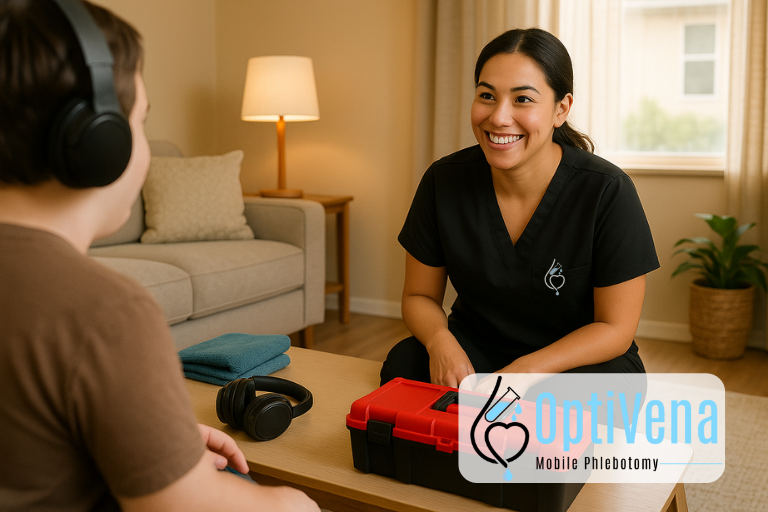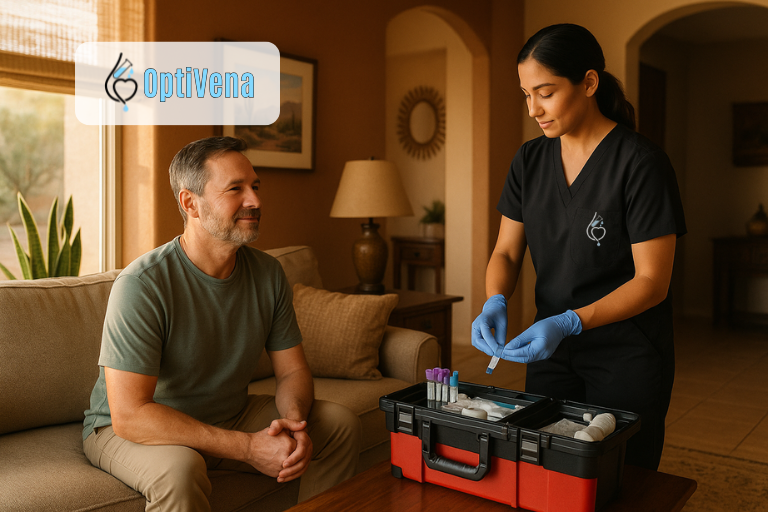Tips for Staying Calm During Blood Draws: A Guide from OptiVena Mobile Phlebotomy

Key Takeaways
- Deep Breathing: Practice deep breathing exercises to help relax your body and mind.
- Distractions: Use music, videos, or conversation to keep your mind occupied during the blood draw.
- Hydration and Nutrition: Stay well-hydrated and have a light meal to make the process smoother and prevent dizziness.
- Visualization: Imagine a peaceful place to help reduce anxiety.
- Communication: Share your concerns with the phlebotomist for reassurance and support.
- OptiVena Benefits: OptiVena Mobile Phlebotomy offers at-home blood draw services in Queen Creek, Gilbert, Chandler, Mesa, and San Tan Valley, AZ, providing a comfortable, personalized, and convenient experience.
For many people, the thought of having blood drawn can cause anxiety and fear. Whether it’s the sight of needles, the anticipation of pain, or simply the clinical environment, blood draws can be a stressful experience. At OptiVena Mobile Phlebotomy, we understand these concerns and are committed to making the process as comfortable and stress-free as possible. Here are some practical tips to help you stay calm during blood draws, along with how our mobile lab services can benefit you.
1. Deep Breathing and Relaxation Techniques
Deep breathing can help calm your nerves and reduce anxiety. Try this simple technique:
Inhale slowly through your nose for a count of four.
Hold your breath for a count of four.
Exhale slowly through your mouth for a count of four.
Repeat this process a few times before and during your blood draw to help relax your body and mind.
2. Distraction Methods
Keeping your mind occupied can significantly reduce anxiety. Here are a few distraction techniques:
Listen to music: Bring headphones and play your favorite calming tunes.
Watch a video: If allowed, watch a video on your phone to take your mind off the procedure.
Engage in conversation: Talk to the phlebotomist or a companion to keep your mind engaged.
3. Stay Hydrated and Eat Well
Being well-hydrated can make your veins easier to find, which can make the blood draw quicker and less uncomfortable. Drinking plenty of water the day before and the morning of your appointment can help. Additionally, having a light meal can prevent feelings of dizziness or faintness during the procedure.
4. Practice Visualization
Visualization involves imagining yourself in a peaceful and calming place. Close your eyes and picture yourself on a serene beach, in a quiet forest, or anywhere that makes you feel relaxed and happy. This mental escape can help reduce anxiety during the blood draw.
5. Communicate Your Concerns
Don’t hesitate to communicate your fears and concerns to the phlebotomist. A professional and empathetic phlebotomist can provide reassurance, explain the procedure, and offer additional support to help you feel more at ease.
Managing anxiety and fear during blood draws is possible with the right techniques and support. By incorporating deep breathing, distraction methods, proper hydration, visualization, and open communication, you can make the experience more manageable. OptiVena Mobile Phlebotomy is here to provide you with a comfortable, convenient, and personalized blood draw experience in the comfort of your home.





